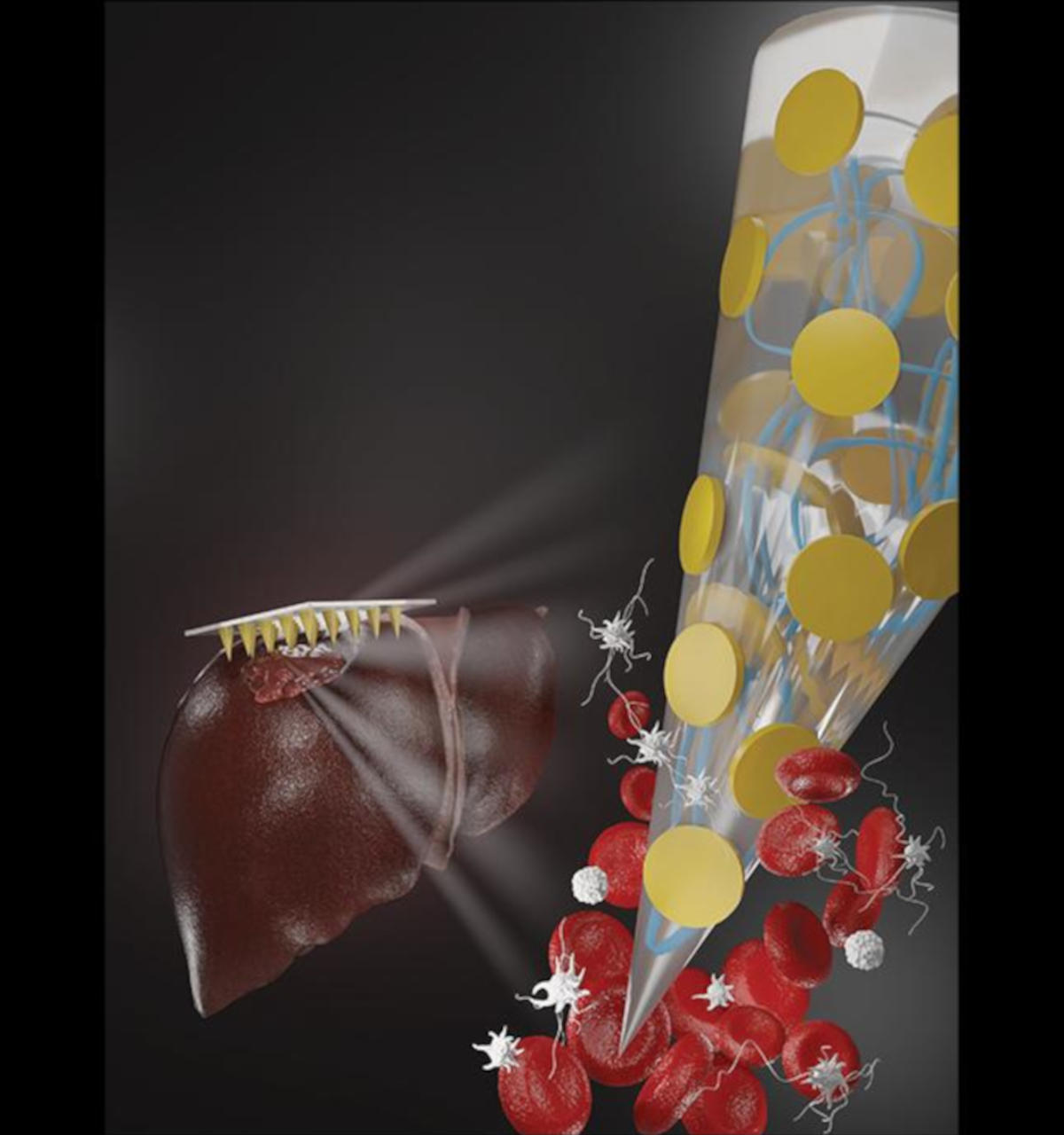
Hemostatic microneedle know-how can be applied like a regular adhesive bandage to prevent bleeding speedily. The biocompatible and biodegradable microneedle arrays (MNAs) on the patch boost its floor speak to with blood to accelerate the clotting procedure and also improve the adhesive qualities of the patch through mechanical interlocking to advertise wound closure. Credit: Built by Amir Sheikhi and Reihaneh Haghniaz/Executed by Natan Barros
A soldier sustains a significant gunshot personal injury in a remote overcome zone, or a manufacturing facility employee activities a place of work mishap and faces a hold off in reaching the clinic owing to site visitors. Sad to say, secondary uncontrolled bleeding resulting from traumatic injuries is the top cause of death for Us residents within just the age assortment of a person to 46.
Amir Sheikhi, an assistant professor of chemical engineering and biomedical engineering at Penn State, aims to battle this issue with his progressive microneedle patch, which has the capacity to right away halt bleeding next an damage.
He laid out his prototype in a new paper that will be revealed in the May perhaps situation of Bioactive Components. The operate will be highlighted on the journal’s cover.
“Excessive bleeding is a major obstacle for human wellbeing,” Sheikhi stated. “With hemorrhaging injuries, it is frequently the loss of blood — not the damage by itself — that will cause dying. There is an unmet health-related need for all set-to-use biomaterials that advertise fast blood coagulation.”

Amir Sheikhi, assistant professor of chemical engineering and biomedical engineering at Penn Point out, designed a prototype of a microneedle patch that can right away halt bleeding immediately after an injury. Credit score:
Kelby Hochreither/Penn Condition
The hemostatic microneedle technologies designed by Sheikhi can be applied like a regular adhesive bandage to quickly stop bleeding. The biocompatible and biodegradable microneedle arrays (MNAs) on the patch maximize its surface area get hold of with blood and accelerate the clotting method. The needles also maximize the adhesive attributes of the patch by using mechanical interlocking to encourage wound closure.
“In vitro, the engineered MNAs minimized clotting time from 11.5 minutes to 1.3 minutes and in a rat liver bleeding model, they diminished bleeding by much more than 90{e538325c9cf657983df5f7d849dafd1e35f75768f2b9bd53b354eb0ae408bb3c},” Sheikhi mentioned. “Those 10 minutes could be the big difference between lifetime and dying.”
The MNA patch can be in comparison with the hydrogel technological innovation that is at present used to deal with bleeding wounds in hospitals, but hydrogel applications require planning and medical abilities. The microneedle patch is pre-engineered for rapid application that everyone can use to halt bleeding, Sheikhi explained, a great deal like a normal more than-the-counter adhesive bandage.
Microneedles — which are presently in use to deliver biologics, these kinds of as cells or medications, by means of the pores and skin or for cosmetic procedures to stimulate collagen manufacturing — are little, creating their application agony-free of charge, according to Sheikhi.
The scientists are now performing to translate the patch from the lab to the marketplace, with designs to even more test the technology.
Reference: “Tissue adhesive hemostatic microneedle arrays for quick hemorrhage treatment” by Reihaneh Haghniaz, Han-Jun Kim, Hossein Montazerian, Avijit Baidya, Maryam Tavafoghi, Yi Chen, Yangzhi Zhu, Solmaz Karamikamkar, Amir Sheikhi and Ali Khademhosseini, 24 November 2022, Bioactive Products.
DOI: 10.1016/j.bioactmat.2022.08.017
All the animal experiments were being carried out following the acceptance of animal protocol by the
Sheikhi started this work as a postdoctoral scholar at the University of California, Los Angeles, in the lab of Ali Khademhosseini, now the chief executive officer of Terasaki Institute for Biomedical Innovation (TIBI). Other UCLA contributors include Reihaneh Haghniaz, Hossein Montazerian, Avijit Baidya, Maryam Tavafoghi, and Yi Chen. Han-Jun Kim, Yangzhi Zhu, and Solmaz Karamikamkar, all formerly with the Khademhosseini Lab and now all affiliated with TIBI, also contributed.










More Stories
Atlanta City Detention Center
Nutrition Can Speed Up Healing After a Traumatic Brain Injury
Proper nutrition could boost recovery from traumatic brain injury